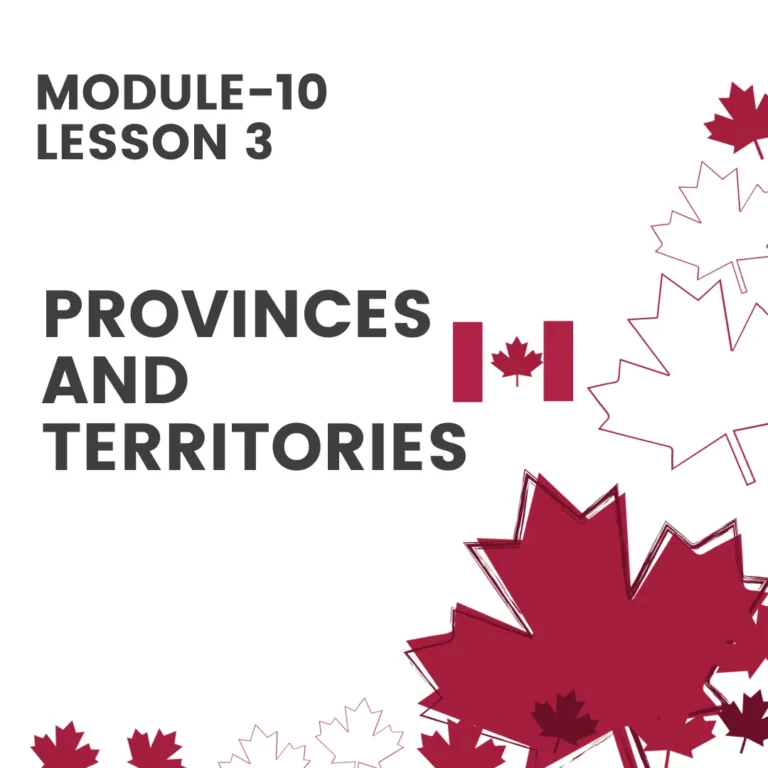Module-3 Lesson 25 Challenge in the West
The western provinces of Canada, which stretch from the plains to the mountain ranges, are home to breathtaking scenery and abundant natural resources. The western regions of Canada face many challenges. This study examines the complex issues that have affected its economy, history and social fabric.
Indigenous Displacement: A Legacy of Colonization
The displacement of Indigenous Peoples in history is one of the most important and profound problems facing the West. As Europeans expanded into the area, they dispossessed traditional lands and disrupted the established lifestyles of Indigenous peoples. The Indian Act, and the creation of reserve lands further marginalized Indigenous communities. These policies have created socio-economic problems that continue to exist today.
The Fur Trade Era: Economic Opportunities and Disruptions
Fur trade was a keystone in Canada’s economic growth, and it brought with it both challenges and opportunities to the West. European traders such as the Hudson’s Bay Company (HBC) and North West Company established trading posts, forts, and settlements in the area. The fur trade not only created a link between Indigenous Peoples and European Settlers, but also disrupted Indigenous Trading Networks. It contributed to the cultural change within Indigenous Communities.
Settler Agriculture and the Push Westward: Environmental Impacts
The transformation of prairies to agricultural landscapes, as settlers moved westwards, presented economic and environmental opportunities. Large-scale farming had severe consequences. These included the loss of biodiversity and ecosystem disruptions, as well as the degradation of soil fertility. Dust Bowl in the 1930s was a result of a combination between drought and bad land management. It is a reminder of environmental problems associated with agriculture.
Railway Construction: Economic Boom and Social Strains
Construction of the Canadian Pacific Railway in the 19th century, a feat which connected East and West was an incredible achievement. The railway caused economic prosperity, facilitated transport and had social implications. Chinese workers faced discrimination, harsh conditions of work, and social exclusion. This highlights the cost to human life associated with this transformational infrastructure project.
Resource Extraction: Economic Boom and Environmental Concerns
Natural resources such as timber, oil and minerals have played a major role in the West’s economic growth. The extraction of these natural resources, however, has caused environmental concern. As the West balances environmental sustainability with economic growth, deforestation and pollution caused by mining have been central concerns.
Indigenous Rights and Land Claims: Ongoing Struggles
Indigenous land rights and Indigenous issues are closely linked to the challenges facing Westerners today. The historical injustices of the past, such as the residential school system and the dispersal of traditional territories, have fueled the ongoing struggle for self-determination and land rights.
Urbanization and Population Growth: Infrastructure Pressures
Vancouver, Calgary and Edmonton, for example, have seen significant urbanization and population growth, which has presented both challenges and opportunities. Urban centers are the driving force behind economic activity and culture, but they face many challenges, including housing affordability and infrastructure stress. Urbanization in the West is a reflection of a larger trend among Canadians to move into urban areas for better economic prospects.
Oil and Gas Development: Economic Driver and Environmental Concerns
Oil and gas extraction, especially in Alberta’s tar sands region, is a key economic force in the West. This industry, however, has been under intense scrutiny because of its impact on the environment, which includes habitat destruction, greenhouse gas emission, and water contamination concerns. The challenge of balancing economic development and environmental sustainability is a constant one.
Climate Change and Natural Disasters: Environmental Vulnerabilities
Climate change is not a problem that only affects the West. It has risen temperatures, changed precipitation patterns and an increased number of natural disasters. The West is not immune to the impacts of climate change, with rising temperatures, changing precipitation patterns, and increased frequency of natural disasters. It is difficult to adapt to environmental changes while reducing climate change.

Conclusion: Navigating the Western Landscape of Challenges
The challenges that the West of Canada has faced span many centuries and reflect the complex past of the region as well as its dynamic present. The West of Canada has faced a wide range of challenges, from the dispersal of Indigenous Peoples to the current environmental, social, and economic issues. In order to recognize and address these challenges, it is important that we take a collaborative and holistic approach. We must also acknowledge the different perspectives of Indigenous Peoples, settler communities, and other diverse groups in the area. In order to ensure a vibrant and resilient future in this vast and diverse region of Canada, it is important to consider sustainable practices, resource management and inclusive policies.






